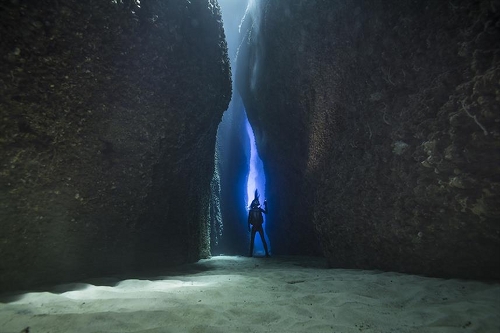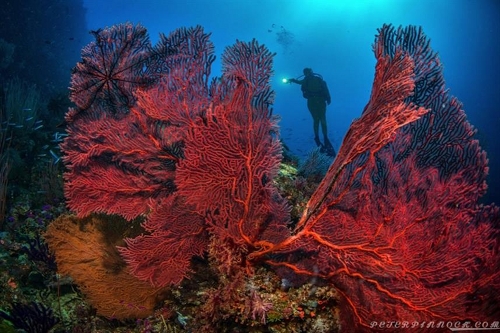The Unspoiled Solomon Islands
So near and yet... A group of Pacific islands north-east from Australia, just close enough to Papua New Guinea to fly over and borrow a cup of sugar, and just a three-hour flight from Brisbane, the Solomon Islands beckon the adventurous traveler who doesn’t need to be coddled.
The Solomon Islands is a sovereign nation of six major islands and over 900 smaller islands in the South Pacific. The islands have many WWII-era sites. Guadalcanal, a province and one of the archipelago’s largest islands, honors fallen Allied soldiers at its U.S. War Memorial. Guadalcanal is also home to the nation’s capital, Honiara. The capital city has a bustling Central Market that is famous for the islands’ produce and traditional handicrafts.
Solomon Islanders share a diverse history and cultural background. The population is mostly of Melanesian descent but is also made up of Polynesians, Micronesians, Chinese and Europeans. There are approximately 550,000 people living in the Solomons and about 70,000 live in the capital city. The islands have been settled since at least some time between 30,000 and 28,800 BCE, with later waves of migrants, notably the Lapita people, mixing and producing the modern indigenous Solomon Islanders population.
Located in the Coral Triangle, the Solomon Islands are known for their diverse aquatic life, ranging from macro to pelagic life. In fact, roughly 75% of the ocean’s coral species are found in the Coral Triangle. As an emerging tourist destination, Solomon’s reefs are untouched, and the waters generally aren't overcrowded with divers.
Leru Cut

Leru Cut is one of Solomon’s most famous dive sites, known for its canyon that sits high above the water and dives deep into the ocean. Ideal diving time is between 11 am and 2 pm as the sun trickles into the cut and illuminates the underwater vegetation, making this a stunning stop for photographers. Divers can search for hidden nudibranchs and octopi or swim over to the nearby wall teeming with sharks, turtles, and schools of triggerfish. The cut can only be accessed by liveaboard and is located in the Eastern Russell Islands.
The history of World War II is apparent in Solomon’s waters, with wrecks and artifacts resting on the sandy bottom. Six months of warfare took place in the Pacific, resulting in nearly 70 ships and almost 700 planes being destroyed. Currently, these wrecks live on as habitats for marine life and as sites for divers to explore. In Wickham Lagoon, there are multiple unidentified Japanese cargo vessels. In the Florida Islands, there are several Japanese and US aircraft wrecks. Hai Island’s site, White Beach, named after a US military code, has a reef constructed of trucks, tractors, bulldozers, and ammo. The artificial reef is now home to jawfish, archerfish, harlequin shrimp, and more. This site is ideal for wreck fanatics, history buffs, and macro lovers.

Off the coast of the Florida Islands are several exciting dives like the northern wall, sandy channel, and two abandoned wrecks with countless glassfish, anthias, and damsels. There is a coral garden with giant clams, peacock mantis shrimp dens, and cuttlefish on the eastern side. The Devil’s Highway is close to the shore and is home to giant manta rays. Near this manta haven is a shallow reef where visitors often drift as they experience the pelagic life feed and swim. Divers looking for a thrill can visit Mary Island and feel the rumbles from the underwater volcano. Barracuda, jacks, and sharks are often spotted at this site.
Visitors can choose from a selection of resorts and liveaboard for their Solomon diving adventures. The Solomon Islands are ideal for divers looking for a quiet, pristine experience, with countless caves, wrecks, and reefs to explore. We recommend the Bilikiki liveaboard for an amazing dive adventure in the Solomon Islands.